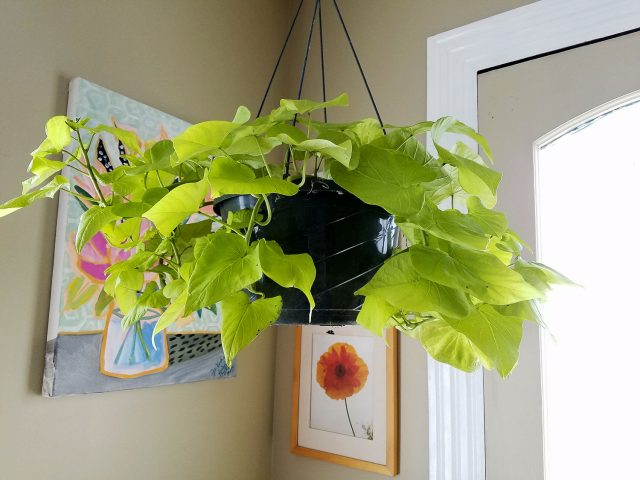Tuesday, December 18, 2018
Statement from OSHA Regarding Decline in Workplace Fatalities in 2017
from OSHA News Release https://ift.tt/2BrB65h
Monday, December 17, 2018
U.S. Department of Labor Cites Nebraska Dairy Company
from OSHA News Release https://ift.tt/2ErqPJl
Saturday, December 15, 2018
(Not) Learning From My Mistakes

Let’s start with the successes.
I count twelve blooms on it, which is double–maybe triple–what it had last year. I attribute that to following my readers’ advice and summering it outside for the past two years. And I’m pretty sure it’s a bona fide Christmas cactus, because there are no points on its leaves. It’s not as easy to keep a poinsettia happy as you might think. They don’t like drafts. But they also don’t like it if you keep the wrapper on too long, because they start poisoning themselves with the ethylene gas they give off. They like their soil moist–but not too moist, because then they get root rot. So, yay me for keeping the poinsettia happy. I think it’s early for a clivia to bloom. I keep it in a cool room that I rarely go into, so it also doesn’t get watered very frequently. In fact, it’s got one of those glass globes with a long stem, which I filled with water, and the water level hasn’t dropped in weeks. I’m not sure whether that means the clivia doesn’t need water at the moment, or the glass globe thingy doesn’t work. But it worked for my mom before she gave the plant to me. And the clivia is blooming.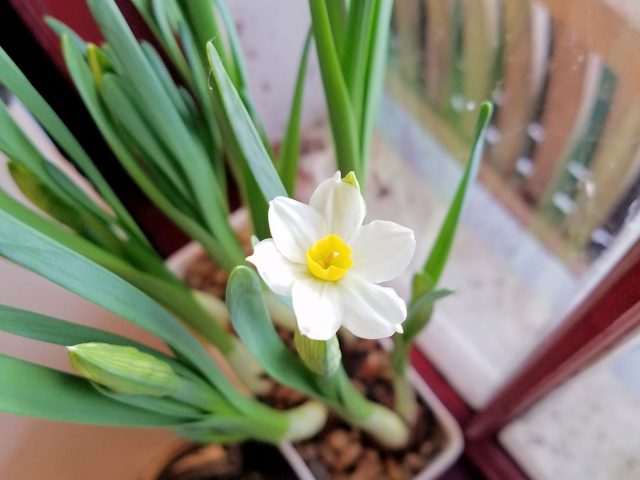
The first flower was pretty and softly fragrant. I could see swollen buds with the promise of many blooms to come.
So what went wrong?
Short answer: I don’t know. Here’s some things I’m considering.
Could it be the variety? If I had realized I had grown ‘Wintersun’ before, I would have chosen a different variety.
I used the alcohol and water method to help reduce their height, which I hadn’t done last time. But lots of other people do that, and their buds don’t blast.
Brent and Becky’s Bulbs say that if the paperwhites are too warm, the buds will blast. My kitchen does get warm, but the bulbs were sitting right up against a single pane, old-fashioned window, so I thought they would be cooler than the rest of the room.
I skipped forcing paperwhites for two years because I was so discouraged about this bud-blasting. But I missed growing them, and bought two dozen for this winter. The plan was to start some in time for Thanksgiving–they blasted.

I planted my second batch of bulbs–hopefully to bloom around Christmas–individually in these humorous mugs.
Waaaaaaah.
Maybe I’m no good at estimating how much water these bulbs in non-draining containers need. Perhaps I’m putting in too much water or not enough–or alternating between both those things.
I still have some bulbs left, and I’m going to pot these up in potting soil, in a container that drains. The only problem being this container is round, and thus more difficult to place where it will get enough light. I will have to figure out a good location. You can be sure I will let you know if I succeed and these paperwhites bloom. And you’ll probably hear about it if I get bud blast again, because I like sympathy.
Wishing all my readers a joyous holiday season.
Posted for Garden Bloggers’ Bloom Day. Inspired by the words of Elizabeth Lawrence, “We can have flowers nearly every month of the year,” Carol of May Dreams Gardens started Garden Bloggers Bloom Day. On the 15th of every month, garden bloggers from all over the world publish what is currently blooming in their gardens. Check it out at May Dreams Gardens.
from Cold Climate Gardening https://ift.tt/2zXi9XV
Friday, December 14, 2018
U.S. Department of Labor Cites Missouri Demolition Company
from OSHA News Release https://ift.tt/2PE8jzt
U.S. Department of Labor Cites Missouri Demolition Company
from OSHA News Release https://ift.tt/2QyiZVm
Thursday, December 13, 2018
U.S. Department of Labor Cites Florida Roofing Contractor For Repeatedly Exposing Employees to Fall Hazards
from OSHA News Release https://ift.tt/2SMhZJX
Wednesday, December 12, 2018
U.S. Department of Labor Cites Georgia Auto Parts Distributor For Fire, Electric Shock, and Struck-By Hazards
from OSHA News Release https://ift.tt/2PvITE9
Monday, December 10, 2018
U.S. Department of Labor Cites South Florida Commercial Printer For Exposing Employees to Amputation, Electrical, and Fall Hazards
from OSHA News Release https://ift.tt/2PxUXEZ
U.S. Department of Labor Proposes to Revise Beryllium Standard for General Industry
from OSHA News Release https://ift.tt/2Ql5Vmm
Sunday, December 9, 2018
My Wintering Over Experiments

If you’re going to grow as a gardener, you have to experiment, you need to try new things. It may be a plant you’ve never grown, or how-to advice you’re going to tinker with to make your own. Because gardening advice is necessarily one-size-fits all, and your garden has very specific conditions. That’s how you get to be an experienced gardener, by trying–and sometimes failing–and trying again until you’re happy with the results (or decide it’s not worth the bother). Once you figure out what works for you, it kind of turns into tradition, and you’ll find yourself telling less experienced gardeners that you’ve always done it this way.
I’m wintering over many plants I’ve never wintered over before. I’ve successfully brought dahlias, cannas, gladiola, tuberous begonia and Mirabilis longiflora (a relative of four o’clocks) through the winter in other years. This year I made several impulse purchases which I justified by telling myself I would winter them over. And reading this article on the Proven Winners website made me realize there were other plants I could winter over. Also, I wanted to preserve some of the plants from the gorgeous hanging baskets I received for my birthday this year. That adds up to more than a dozen experiments.

I got two of these gorgeous hanging baskets for my birthday, and I’m attempting to carry the geraniums and the sweet potato vines through the winter. If they survive, I will probably use them in window boxes on the carriage barn.
I’m not sure this is going to work, but how do I know unless I try? My wintering over experiments fall into two categories: dormant plants that I hope to bring out of dormancy next spring, and plants that I’m growing as houseplants that will be returned outdoors in the spring. For a few plants, I’m trying them both ways. In the case of the houseplants, I will be happy if they merely survive well enough for me to take cuttings in the spring or to cut them back and induce new, healthy growth. I fully expect them to get leggy and bedraggled with the lower levels of light in my house.
What I did and why
Here’s what I’ve done, plant by plant, in roughly alphabetical order. I hope it inspires you to do some experimenting of your own!
Agapanthus (aka Lily of the Nile) A friend had recommended the Storm series to me: ‘Snow Storm’, ‘Blue Storm’, ‘Thunder Storm’, and ‘Sea Storm’. That’s what I thought I was getting when I ordered ‘Storm Cloud,’ but I didn’t go back and check the email and later found out I was wrong. However, it’s a deep bluish-purple, which is what I was looking for, so onward with the experiment! I received a pretty small plant in the mail, and it didn’t bloom this year. My goal this summer was to enable it to build up size and strength so that it would bloom next year.
Turns out there are deciduous and evergreen agapanthus and you winter them over differently. After some detective work, I determined mine was evergreen, so it came out of the big container on my terrace and into a small container of its own, and is now part of my houseplant collection in the dining room. Our dining room is where our woodstove is located, so it’s the warmest room in the house. We also have a big east-facing window that’s not overhung with a porch roof in this room, so it gets the most light of any window that’s in a warm room.

The large dining room window gets morning sun–assuming the sun is shining, which is a rare thing. The terra-cotta-looking plastic pot at far left holds the tropical hibiscus. At bottom right you can just see one of the Lemon Coral sedums. The big orange tree belongs to my son. He grew it from a sprouted seed he found in an orange many years ago.
Begonia I bought tuberous begonias for the Garden Shelter. They seem well-suited for that location, but they were expensive, so I want to winter them over. I have had mixed success wintering them over in past years. I kept one going for two or three years and then one year it just didn’t resprout. Fingers crossed for these Mistral Pink begonias. I’m following the advice on A Way to Garden and keeping them in their hanging baskets.
Canna As I mentioned, I’ve wintered over cannas before. I used to have several different kinds, and they all made more tubers and there was more to take care of every year. I decided I didn’t need that many cannas, so now I just winter over Tropicanna Gold. I dig them up, shake off as much dirt as I can, and put them in a plastic garbage bag, again following advice on A Way to Garden. Cannas don’t do that well for me. They don’t get that big and often don’t flower. Maybe they don’t get enough heat, and maybe they don’t get as rich a soil as they’d like. They still work well enough in containers as a foil for other plants, so I’m keeping them going.Coleus (Solenostemon varieties) I bet more people overwinter this tender perennial than any other, because it’s so easy. Cut some stems, stick them in a glass of water, and watch them root. I think it’s best to pot them up soon after, but I confess I haven’t done that yet with mine. I did root some cuttings in vermiculite as well, just to see if I could. I think they “took” and I need to pot them on in potting soil.
Dahlia I used to grow dahlias in pots because I knew I wanted to bring them into the basement for the winter. We had a dirt basement in our former home and one year a dahlia actually rooted into the floor! But dahlias grow bigger and better when planted in the ground, especially in well-amended soil. I wait for a killing frost before digging them. I cut the tops off, leaving about a 6-inch handle of stem. The stems are often as big around as broomsticks, so I resort to loppers to cut them.
I use a garden fork, and start further out from the plant than I think I need to, a foot to a foot-and-a-half away from the stem. I stab the fork straight down, and then pry up. The goal is to get the fork under the tubers and lift them up without stabbing or breaking them. I usually try to rinse them, but I didn’t get to it this year. I’m not too worried, because they wintered over just fine in their pots, covered with soil, at the old house. I put them in cardboard boxes, making sure to label the variety on the box, and store them in the coolest part of the basement. The hardest part is finding a big enough box, because the clumps can get really big, and I like to plant them big in the spring, so I don’t want to divide them.Eucomis (aka Pineapple Lily) I’ve been thinking about trying this bulb for several years, so when I saw some at the Ithaca Garden Fair I snatched them up. They were small offsets from a home gardener and as I suspected didn’t bloom this summer. I removed them from the big pot they were in, shook off as much soil as I could, and then put them in a labeled paper bag, stored in the basement. Hopefully they will grow to blooming size next year. Eventually I want to try some in the ground, inspired by this comment by the Berkshire Botanical Garden, stating that they grow it in the ground in their Zone 5b garden.
Four O’Clocks (Mirabilis jalapa) Someone gave my mom a ‘Limelight’ four o’clock plant. I decided to dig it up and save the tuber, just like I used to do with Mirabilis longiflora. Four o’clocks are easy to grow from seed; why would anyone grow it from a tuber? Because if you start it from seed, it takes longer before it starts flowering. I confess, I have a thing for chartreuse foliage and I would grow it even if it didn’t bloom. Chartreuse foliage looks great with colchicum flowers.
Geranium (As in Pelargonium the bedding plant geranium that we treat as an annual, but is actually a tender perennial.) There were two in each hanging basket that I got for my birthday (pictured near the top of the post). I was inspired by this post in A Garden For The House showing how to rejuvenate geraniums to bloom in the winter. I think I started too late to get them to bloom this winter, but if they make it through the winter I can take more cuttings to grow next spring.
Many other sources say to let them dry out and go dormant, and revive them in the spring. I’m trying both. Besides the two on my windowsill, I’ve got two in the basement that were pried out of the hanging basket and put into a plastic grocery bag, which I loosely tied up. I just went to check on them, and they’re not very dormant. I see pale, yellow growth through the bag. Not sure what I should do about that–if anything.
Gladiolus My husband loves glads. For several years I bought a bag of mixed colors for him to plant in his vegetable garden. He always admired the dark red ones the most. Finally I got smart and bought some deep red ones: ‘Espresso’ and ‘Black Beauty’. Some of the mixed color glads have come back three years in a row, but I’m not taking any chances with these dark beauties. I dug them up, clipped the foliage off, removed the old shriveled corm from the new one, and put them in labeled net bags. They’re down in the basement with the rest of the stash.
Hibiscus I got a Jolly Polly tropical hibiscus as swag at the latest garden communicators national conference. Some grow it as a houseplant, and others let it go dry and dormant. Right now it’s in the dining room with all the other houseplants. I’ve only watered it once. I guess I don’t have the heart to totally withhold water, and as long as it’s green I don’t want to put it in the dark basement. Kind of sitting on the fence with this one.
Jewels of Opar (Talinum paniculatum ‘Kingwood Gold’) I grew this from seed this year and it looked great with dark purple heucheras and magenta-pink colchicums. I had it once before when it came in with another plant from a Tennessee gardening friend. Everything I read said it would self-sow but it didn’t here.
I got seed and grew it again and had five plants this year. I’ve dug the tubers and stored them in a paper bag in the basement. I’ll replant them in the spring and we’ll see how that goes. In the meantime, a Pennsylvania friend gave me some seed. Many people in warmer climates call Jewels of Opar invasive. Keep that in mind if “warmer climate” is where you live.Rain Lilies (Zephyranthes) A friend from Texas sent me some rain lilies. I thought they were going to be annuals for me until I read on Old House Gardens how one of their customers keeps them going in Wisconsin. I had planted mine in the ground, so dug them up in the fall and replanted them in a clay pot. This year they didn’t bloom much, and I wonder if it’s because they were disturbed. Mine are still in their pot in the dark part of the basement with the other stored plants and still have green leaves on them. I don’t know what it’s going to take for them to dry out and go dormant. I’ll bring the pot back out in the spring.
Salvia There are lots of tender salvias and the advice is to “take cuttings to keep them going.” This year I took some cuttings from a particularly attractive salvia at the same time I took the coleus cuttings. I’m pretty sure they rooted. You’re supposed to look for new growth. With the low levels of light in the house, there hasn’t been much new growth, but I think there’s been some. At any rate, I removed the mini-greenhouse covering (just a lettuce mix container) and they haven’t wilted, which means it’s time to pot them on. I followed the directions on taking cuttings in Making More Plants by Ken Druse.
‘Lemon Coral’ Sedum (Sedum mexicanum) I love this plant. It mixes so well with other plants in a container, but it’s not hardy here. It was a trial plant sent to me by Proven Winners, and they say it does well as a houseplant, so I’m trying it this winter. It fell apart as I was digging it out of its summer home, so I have it in several different pots growing in different locations in the house.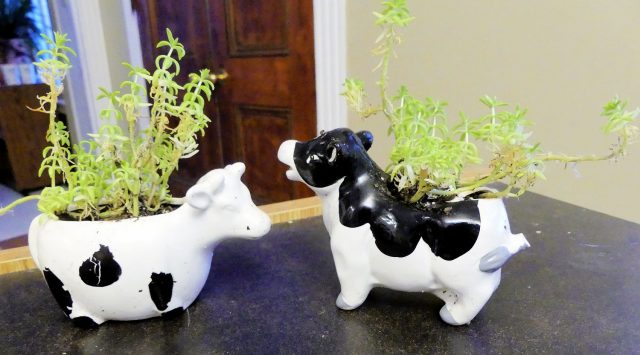
Because the sedum is shallow-rooted, I’m having fun growing it in unusual containers, like these repurposed cow creamers. There’s no drainage, so I have to be careful to avoid overwatering.
Golden Sweet Potato Vine (Ipomoea batatas) There were two of these vines in each hanging basket I got for my birthday. I replanted two in a hanging basket and I’m growing them as a houseplant. I harvested the tubers for the other two, tossed them in a paper bag and they’re in the basement with all the rest.
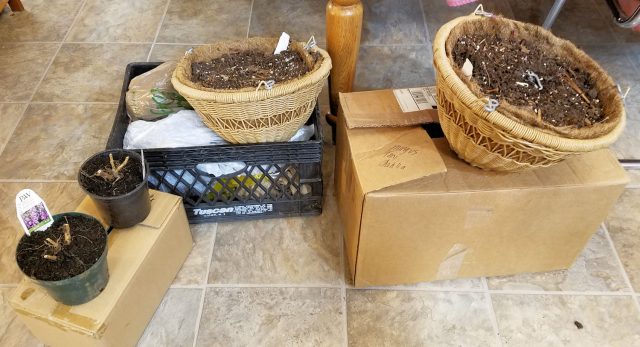
Here’s the whole stash before it went in the basement. The two hanging baskets hold tuberous begonias. The two small pots are angelonias. The two boxes have dahlias. Everything else is bagged up and in the black crate.
About that basement I keep mentioning
It’s neither as cold or as dark as recommended. Since we had our heating system renovated, our basement temps hover around 60°F (~16°C), when 40°F (~4°C) is most commonly recommended. We actually have a lot going on in our basement: a washer and dryer, a pantry, a second stove, and two freezers–and a large household that uses them all. Not everyone who goes down there remembers to turn the light off when they come back up. I did box and crate everything and stuck it all in the crawl space part, so my plants are in the darkest and coolest location, but it’s not ideal. But that’s part of the experiment, to see what works for me in my not-ideal conditions.
from Cold Climate Gardening https://ift.tt/2zQXuEZ
Friday, December 7, 2018
U.S. Department of Labor and Lamar Outdoor Advertising Company Renew Alliance to Protect Workers
from OSHA News Release https://ift.tt/2BVCCxU
Tuesday, December 4, 2018
U.S. Department of Labor Returns to Normal Enforcement In Northern Mariana Islands Following Typhoon Yutu
from OSHA News Release https://ift.tt/2zKWLFn
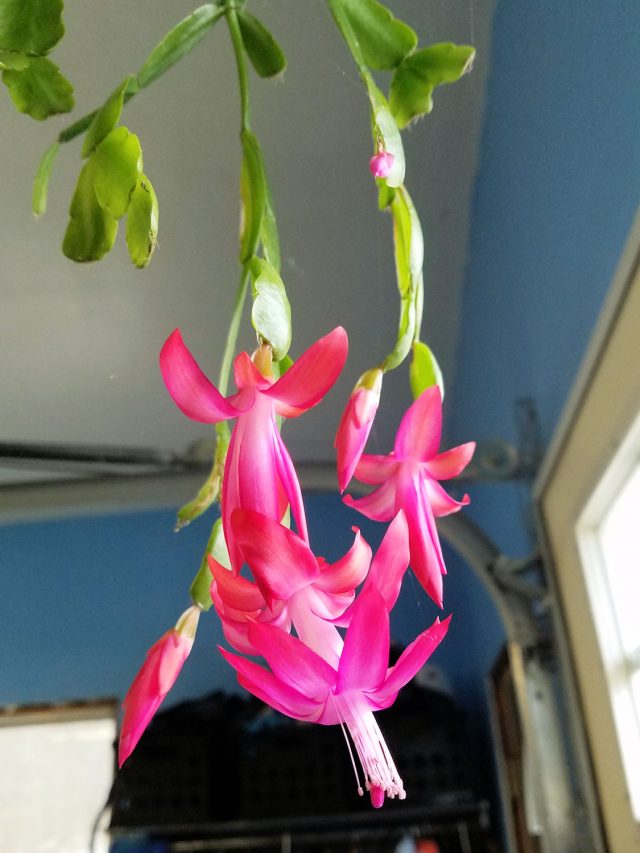
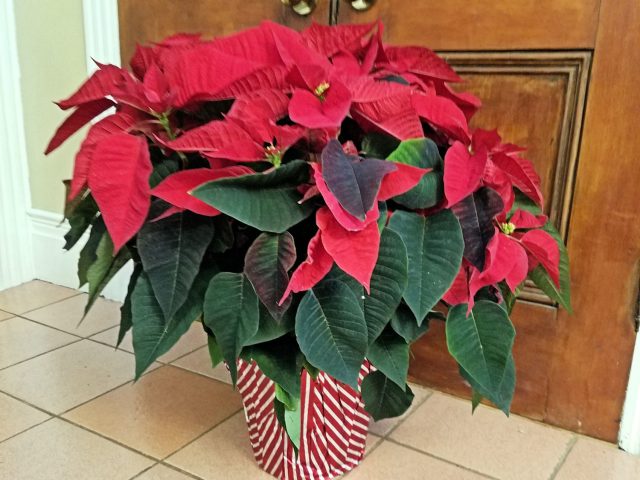
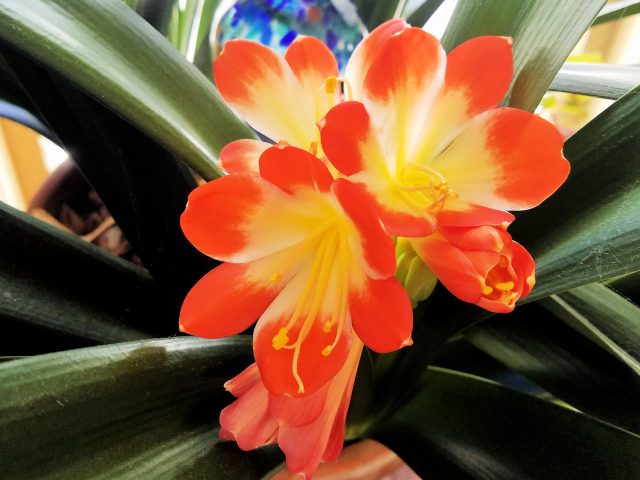

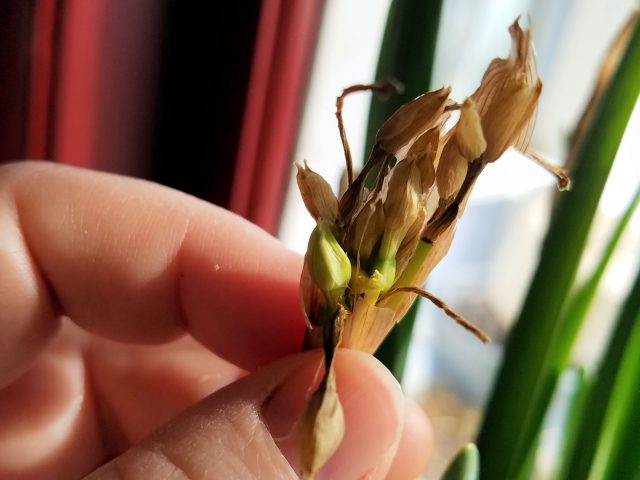

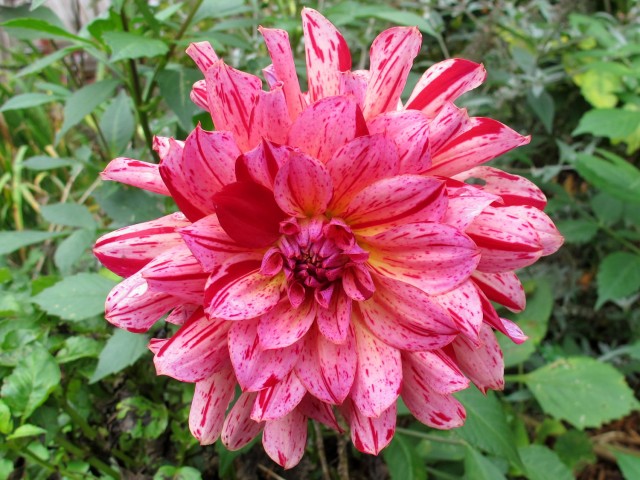
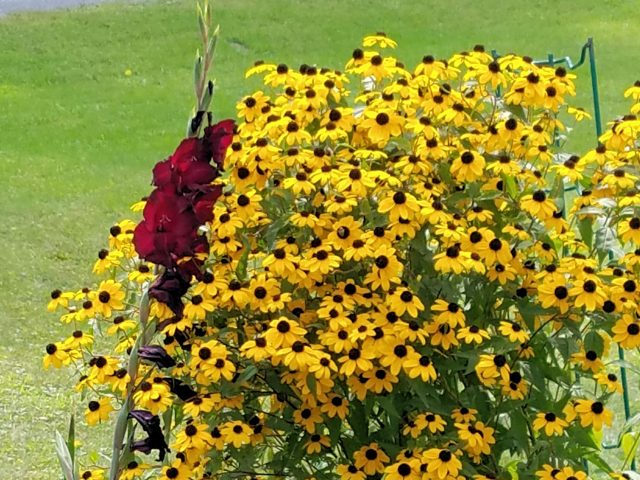
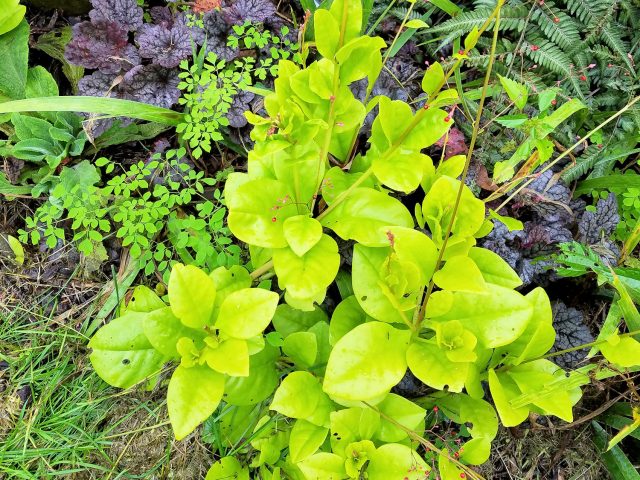
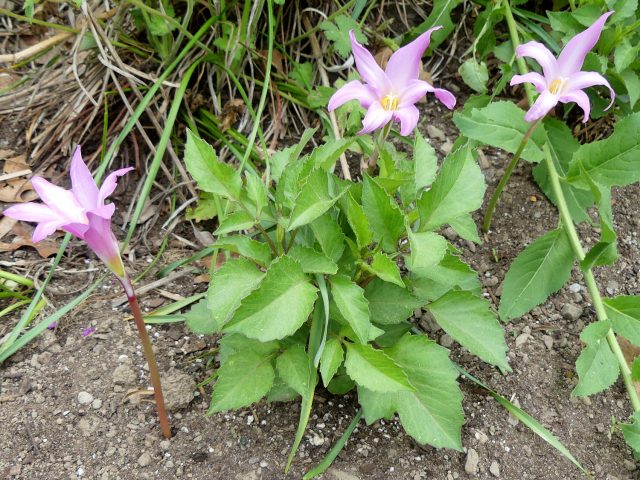

 Sedum mexicanum in a container my daughter painted.
Sedum mexicanum in a container my daughter painted.